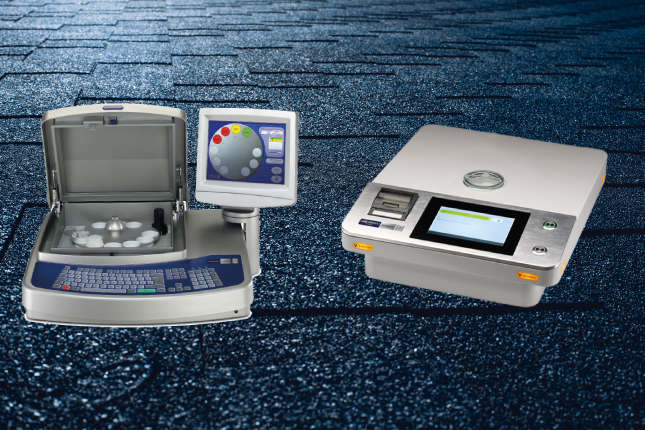There is more to roofing shingles than meets the eye. Asphalt (or bitumen) roofing shingles are manufactured to tight specifications, for colour and texture, size and weight. They also must provide the desired performance properties, such as strength, wind resistance and fire resistance. In many cases, they even prevent moss and algae growth to ensure your customers’ roofs looks great for years.
X-ray Fluorescence (XRF) can ensure your product meets standards and specifications by helping you keep your processes under control. XRF analysis can be carried out on samples that are in a block or granular form, meaning you can check materials when they arrive at your facility and test the final product before shipping.
The XRF technique can detect a large range of metals and non-metals, including copper, bromine, and zinc. The test itself is very accurate and doesn’t affect the sample at all, meaning you can even test a product you intend to ship to a customer.
For example, you can use XRF analysis to control the moss and algae resistance properties of your shingles. Many manufacturers add 4 to 10% copper-containing granules to the mix that’s applied to the shingles’ surface.
Having XRF equipment that is set up to detect copper at your facility means you can check the copper content of the base granules from your supplier. This can ensure you are using the right materials, or the quality of a product from a new supplier meets your expectations. You can also take a sample of the finished shingle and check the amount of copper present. If you take measurements across the surface then you can check the distribution of the mix. This gives you an absolute value to send with the shipment, and any problems with mixing in your own facility can be highlighted before it could become a problem for your customers.

We have two models of benchtop XRF analyzers that are ideal for measuring metals such as copper in shingle manufacture: the LAB-X5000 and X-Supreme 8000.
Both types of analyzer are easy to operate by non-technical staff. We’ve made sure they are able to withstand a busy production environment by making them robust in design. They come with intuitive, easy-to-use software. It’s also possible to programme-in pass or fail criteria, so the operator instantly knows if there’s a problem with the sample – this helps prevents misunderstandings or problems with interpreting results in production.
To see which XRF model is best for your business, get in touch with one of our experts. You can read more about each analyser by following the link above. You can also browse application notes on the uses of the analyzers in the Downloads section of our website.
Get a quote